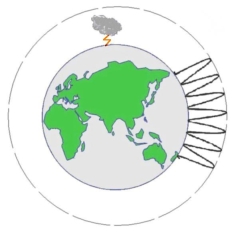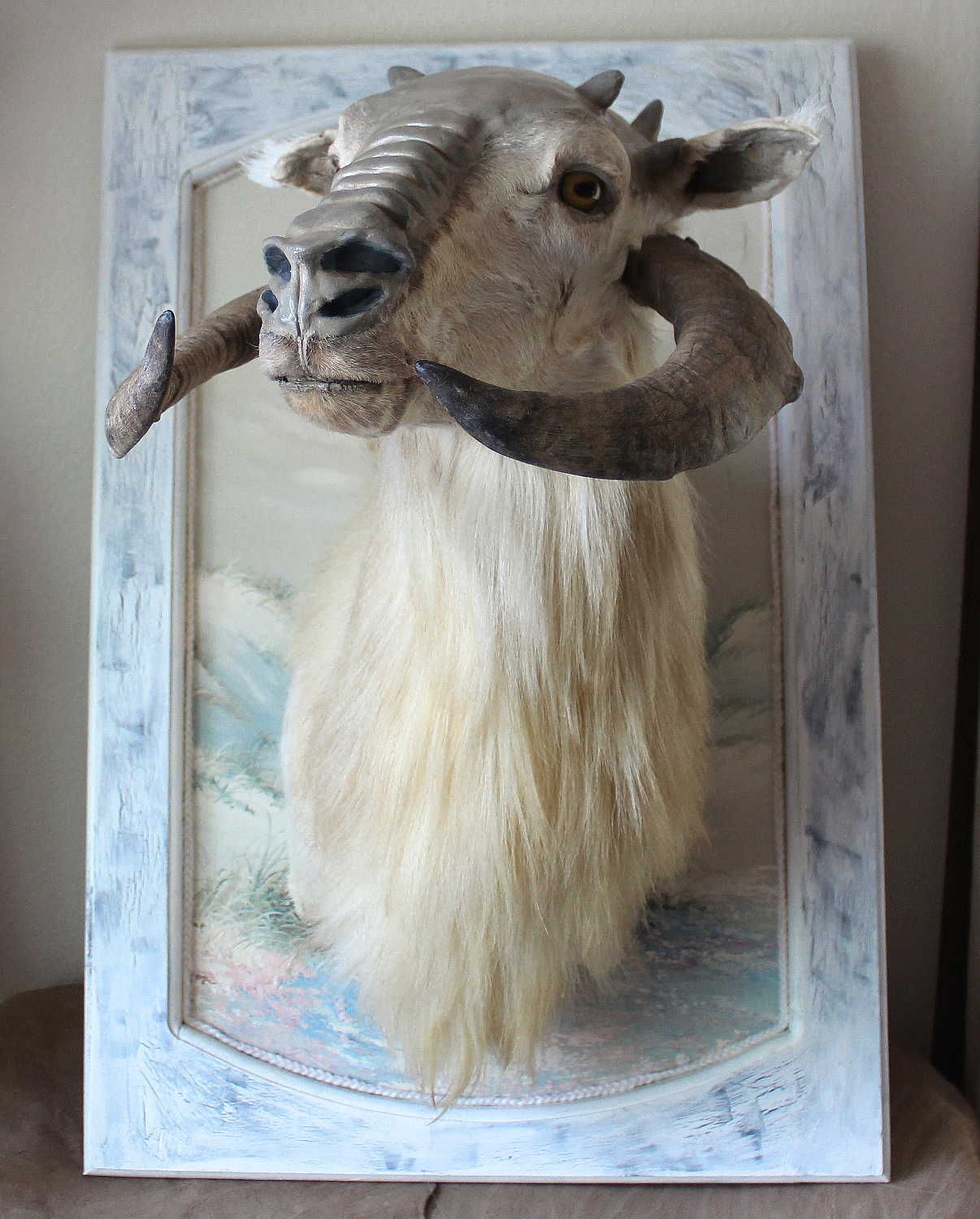If all I did with my blog was tear apart pseudoscience masquerading as real science and promoted by pagans as being “proof our spirituality is real!!!” I would never write about anything else. Plus I would quickly despair for the future of our community instead of mostly focusing on the positives. But this particular piece of pseudoscience slithered across my Facebook feed over the weekend from a few different people. The short version is that it claims that a change in the frequency of Schumann resonances signals that human “vibrational frequencies” are rising, which somehow makes us better people and will soon usher in a better world where in we’re all nice to each other and nothing bad ever happens.
Ugh. Like I said, there were multiple folks who reposted this, but I’m going to keep my rant to my own space instead of arguing on someone else’s turf. This is yet another example of a fundamental misunderstanding of actual scientific principles on a couple of different levels.
For one thing, Schumann resonances are not some sort of super-special waves that measure how good humans have been (Santa Claus, is that you?) Here, you can read NASA’s writeup about them. It’s just a particular sort of wave caused by lightning in which waves of a certain frequency, which bounce along in between the Earth and its ionosphere, combine with themselves rather than dissipating normally. It’s kind of like when a bunch of people hold hands and skip across a field together, gaining more and more momentum with each skip, only it’s one person replicating themselves each time they hit the ground. The reason this happens is because these waves are so incredibly long they wrap around the earth two or three times, making it possible for a wave to overlap itself in just the right way.
I’ve seen people on FB claim that our brains are affected by Schumann resonances. But the fact is that they so much bigger than us–about 38,000 kilometers long for a 7.83 hertz wave (https://skeptoid.com/episodes/4352)–that we are simply incapable of detecting or interacting with them. And even if that were somehow different, animal brains wouldn’t be able to afford to be significantly affected by such forces. If our brains shifted significantly every time there was a lightning storm, or a solar flare, or any of the other waves that we normally don’t even notice, we wouldn’t be able to remain mentally stable enough to carry on our everyday activities and would die out. There are rare exceptions, but they’re when we’re literally out of our element–the only time our human bodies have to worry about solar flares, for example, is when astronauts, not protected by the Earth’s atmosphere (you know, the thing that shielded us from solar flares for billions of years so life could evolve to where it is now) have to be given artificial protection from radiation. Schumann resonances, by contrast, are not something that we would ever really have to worry about.
Moreover, the idea that we are able to “think hard” enough to change Schumann resonances is ridiculous. It is literally impossible for our thoughts and behaviors to have any effect on the frequency at which lightning emits electromagnetic waves. I mean, just comparing the relative electrical charge of a human brain and that of lightning shows there’s no way this can happen. The average working charge of the human brain is about .085 watts, roughly equal to that of a triple A battery. That’s because you can’t have ENTIRE brain firing off at once, without being used to do other things like, oh, making sure you keep breathing. (http://gizmodo.com/could-you-charge-an-iphone-with-the-electricity-in-your-1722569935) Compare that to a single lightning bolt which has about 10 billion watts of energy (which, as http://www.windpowerengineering.com/featured/business-news-projects/how-much-power-in-a-bolt-of-lightning/ mentions, is about enough to power a 60 watt bulb for six months and then some.) The waves produced by such a massive outburst of energy are much too powerful for us to affect–the only things that affect them are massive, global/atmospheric conditions like seasons, solar activity and the Earth’s magnetic field (and no, we can’t change that ourselves, either.)
And considering our brains are pretty well insulated in layers of cerebrospinal fluid, bone and skin, it’s not like the electricity can easily leave our heads anyway. That means there is literally no way for our puny little electromagnetic waves to have an effect on lightning or the waves it produces. Even if you could somehow get every person thinking the same thing at the same time with all their brain (and somehow not suffocating because all involuntary functions have ceased, like breathing), there’s no way to focus it on a particular lightning bolt or its resulting wave, because it can’t get out of your skull, other than the meager waves that an electroencephalogram reads. So saying that our brains can affect Schumann resonances is like saying that throwing a handful of sand is going to move a mountain ten feet north. Yeah, sure, you can keep throwing that sand your whole lifetime, but the most you may do is wear a divot in the ground.
I love the pagan community, but I hate that so many pagans will swallow pseudoscience without question and completely ignore the basics of how science works. It’s one thing to have beliefs about “how thoughts change reality” or somesuch. It’s another to take perfectly well-researched natural phenomena and bastardize the facts behind them so badly and then present them as “proof our religion is real!” I’ve already written about why trying to legitimize ourselves with really awful science is a bad idea and how collective experiences are often muddied up with confirmation bias. It’s just frustrating to sometimes feel like the proverbial voice crying in the wilderness (which, ironically, was a voice about accepting something on blind faith.)
Moreover, this sort of pseudoscientific bullshit takes the focus away from the real efforts people are putting in to improve the world. We haven’t made all the positive changes we have in the past few decades–civil rights, environmental awareness, etc.–because somehow our “frequencies” changed. We achieved those changes because millions of people protested, and marched, and fought–and bled, and died. It is a slap in the face of all those who made huge sacrifices to say “Oh, well, people are just thinking nicer things and magically becoming more aware and vibrating differently.” A lot of those people wouldn’t have even encountered better ways to think or be without the efforts of those making real social and environmental changes with blood, sweat and tears.
By the way, that whole “changes in the global consciousness” thing? Simple explanation: we are apes, and apes are social animals. We have these things in our brains called mirror neurons, which cause us to want to imitate others–monkey see, monkey do. (Or ape see, ape do.) So when we model better ways of being to others, others are more likely to adopt what we do, even if it takes time and the aforementioned sacrifices. Socially, these ways of being become more acceptable and in the norm. None of this is magic, just the way our ape brains function–without having to pretend our little AAA battery electrical charges somehow can influence the waves created by lightning bolts.
And please don’t pull that whole “But science just hasn’t discovered it yet!” crap. What we undeniably know about both our brains and Schumann waves is more than enough to make this crackpot idea so highly unlikely that it is essentially impossible. Again: sand and mountain. No one is going to test the hypothesis for the same reasons no one is going to test whether jumping off a building and flapping your arms while visualizing yourself becoming a bird will actually result in you flying: we know enough about how physics and related sciences work to know that such an experiment would be a wasted effort.
Finally, this whole idea that we can affect massive electromagnetic waves with our brains is utterly arrogant and anthropocentric. We are not as important as we like think we are. We are not the Earth’s special children, blessed with amazing talents that allow us to have influence over forces that much greater than ourselves, especially without some form of technology. We are just mammals with big brains, opposable thumbs and upright, bipedal walking styles, and we have much more serious things to worry about than how we’re so great we change massive electromagnetic waves with our neurons.
I know I have other things on my mind, so I’m going to get back to preparing for the Tarot of Bones to arrive here later this month, and finishing up art for my Patrons on Patreon, and other stuff I really ought to be doing now that I’ve done my part to hopefully chase a little more pseudoscientific fluff out of my community.
Enjoy this post? Consider picking up a copy of my book Nature Spirituality From the Ground Up which, although it does some archetypal mythologizing of nature, is deeply rooted in natural history.



